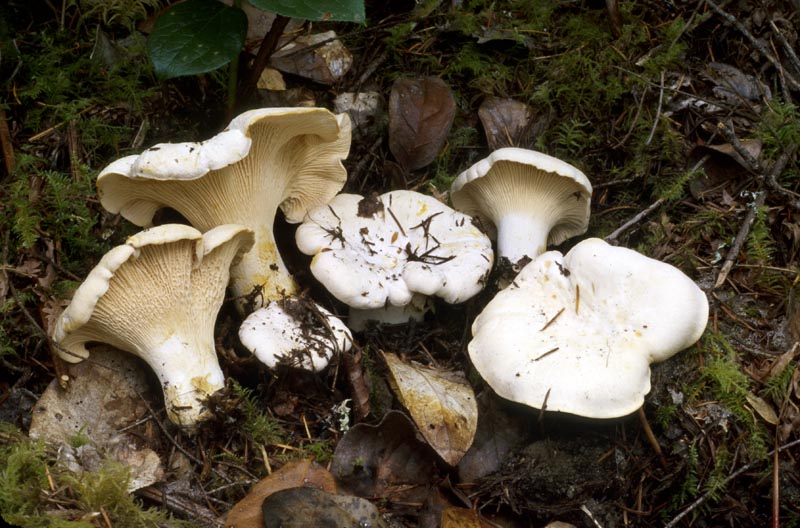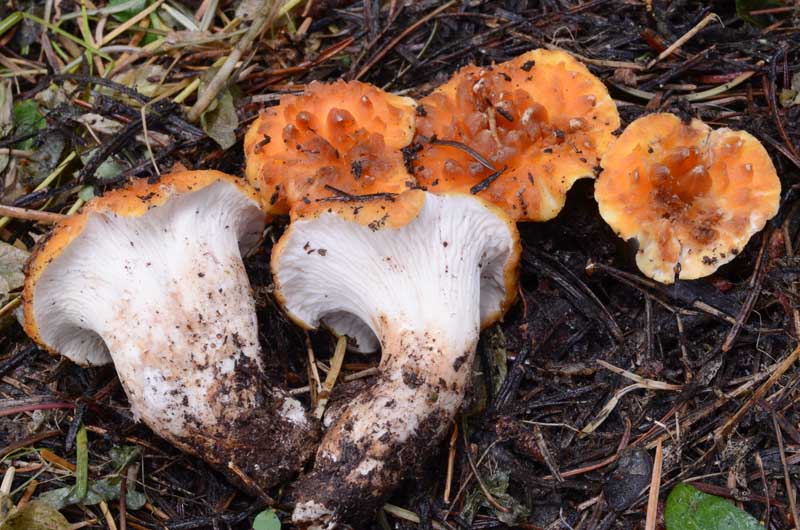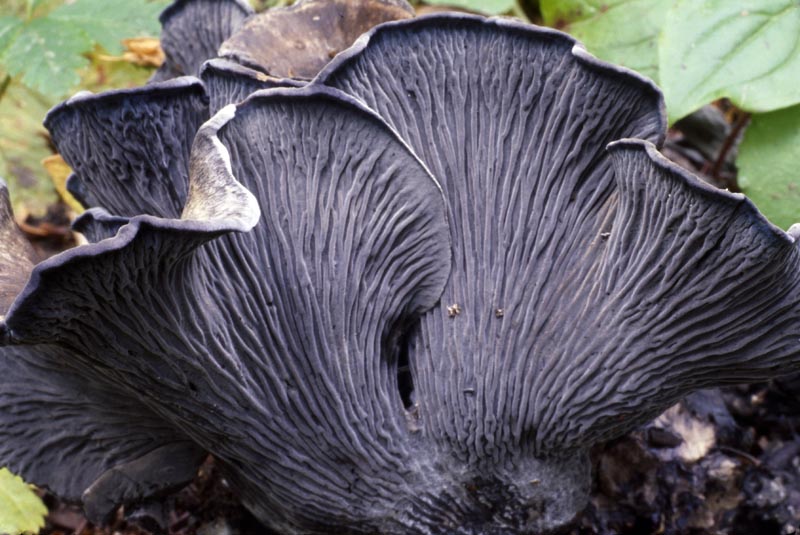Veined Mushrooms - Chanterelles and similar looking mushrooms, with
undersides ranging from almost completely smooth to veined,
but never quite fully gilled. Even though they are not
all related, most are mycorrhizal.
Cantharellus (Cantharellales) - the popular chanterelle, medium sized and
stocky, coming in orange and white. Note the difference between
chanterelle veins and regular gills. 5-15cm or so. The stems are solid.
C. formosus - often west of the cascades.
Uniformly orange and somewhat slender.
C. cascadensis - east of the cascades and southern.
Yellow fading to white in the centre, with paler veins. Stockier,
clavate stem.
C. roseocanus - pale cap with a hint of
rose. Veins brighter than the cap. Often but not always
with spruce and
Pine.
C. subalbidus - starts out white but will
turn orange in age. Stockier than C. formosus, but confusable
with the others when old.
C. californicus - a uniformly orange stocky species and
our only one always under hardwoods. Southern.
False chanterelles
Hygrophoropsis - this gilled bolete has thinner blade-like gills than
the ridges of a chanterelle.
Chroogomphus tomentosus - dry, orange and fuzzy. Another gilled
mushroom very often mistaken for a
chanterelle.
Turbinellus floccosus - orange, but paler
more irregular veins, scaly and
umbilicate. (Fully described below).
Craterellus (Cantharellales) - contains the
very common small winter brown chanterelle and a rare (but very
common in California) black chanterelle with barely any hint of veins
at all, which might make it difficult to recognize. <10cm. The
stems are hollow.
C. 'neotubaeformis' ('infundibuliformis') - small
and slender, orange to brown cap.
C. calicornucopioides ('cornucopioides') - practically
smooth under the cap, almost worth moving to
CA for, where it is a weed, mostly under oak. An excellent
edible.
C. atrocinereus ('cinereus') - similar less tubular
oak species with prominent veins.
Gomphus/Turbinellus/Clavariadelphus (Gomphales) - with
irregular wrinkled folds unlikely to be mistaken for true gills. They are related to the colourful Ramaria corals. Up to 15cm or so. Their spores are
wrinkled to warted.
G. clavatus - purple veins!
T. floccosus - orange, but paler
more irregular veins, flattened scales and
umbilicate (unlike
Cantharellus). Fades to brown.
T. bonarii - similar southern species, smaller,
clustered, paler, more erect scales and often partially buried.
T. kauffmanii - brown, larger, with more erect scales.
Polyozellus mutliplex grp (Thelephorales) - related to many
of the tougher stemmed Toothed mushrooms (except Hydnum)
and the Boletopsis polypore. The so-called blue
chanterelles, growing in large clusters 15cm high and
even wider.
Polyozellus atrolazulinus - the
brightest blue when fresh, dark flesh, smallest
species with the smallest spores.
P. marymargaretae - light blue when young, darkening to look like the others in age, blue
flesh.
P. purpureoniger - tends to purplish, pale flesh.
















